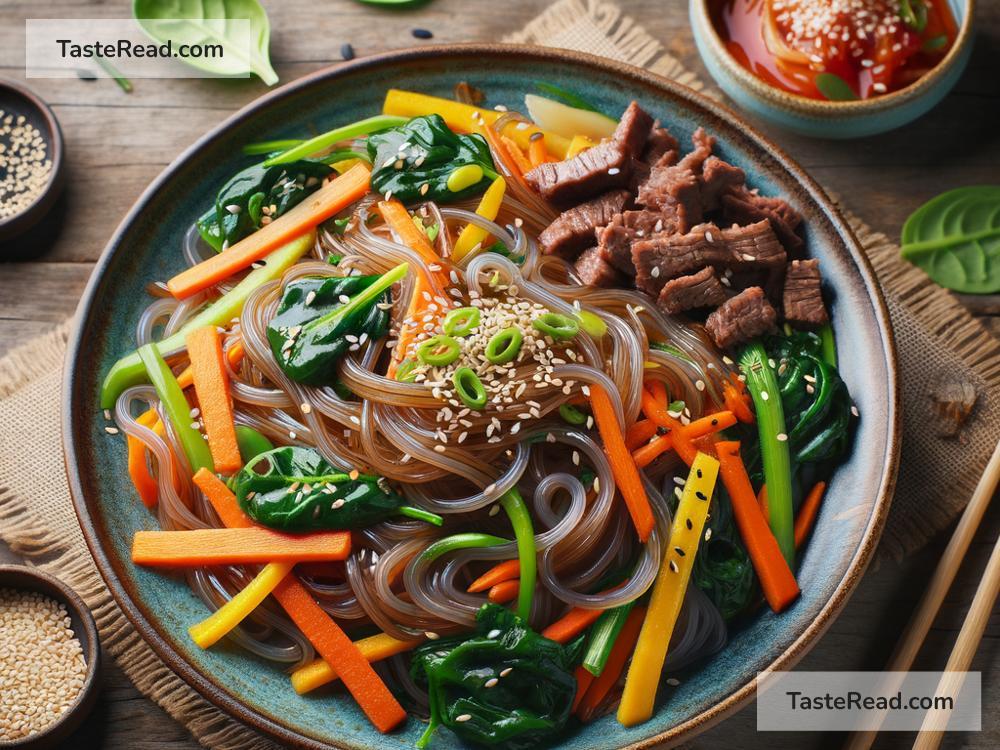Journeying Through the Delicious Nuances of Korean Japchae
If there is one dish that perfectly captures the heart and soul of Korean cuisine, it’s Japchae. This simple yet sensational dish has earned its place on dining tables worldwide and is loved by all who try it. With its mix of colorful vegetables, tender slices of beef, and chewy sweet potato noodles, Japchae brings together incredible flavors and textures that leave you craving more. Let’s take a journey through this iconic dish to explore what makes it so special.
What is Japchae?
Japchae (pronounced jap-chay) is a classic Korean dish that literally translates to “mixed vegetables.” While the name might emphasize the vegetables, the star of the dish is actually the glass noodles, called dangmyeon. Made from sweet potato starch, these noodles are stretchy, chewy, and delightfully slippery. They’re what give Japchae its unique texture.
But Japchae isn’t just about noodles. It’s a beautiful mix of thinly sliced beef, vibrant vegetables like carrots, spinach, mushrooms, and onions, and a seasoning of soy sauce and sesame oil. These ingredients come together to create a dish that is savory, slightly sweet, and full of depth.
A Dish with a Rich History
Japchae has roots dating back to the 17th century during Korea’s Joseon Dynasty. Legend has it that King Gwanghaegun was served the dish at a royal banquet. He loved it so much he awarded the chef with a high-ranking position in the palace. The original version didn’t include noodles—it was purely a medley of cooked vegetables. The addition of glass noodles came much later, but today it’s hard to imagine Japchae without them.
Over time, this dish evolved to suit everyday cooking, but it remains a popular offering during Korean celebrations, holidays, and parties. Its vibrant presentation is perfect for festive occasions, though many enjoy Japchae as a comforting weeknight meal.
The Components of Japchae
One of the beauties of Japchae is its versatility. While traditional recipes might call for specific ingredients, you can easily adjust it to your taste or dietary needs. Here’s a closer look at what’s typically included in Japchae:
Sweet Potato Glass Noodles (Dangmyeon)
Japchae’s noodles are nothing like pasta or rice noodles. They have a translucent appearance and a chewy texture that makes them fun to eat. Because they’re made from sweet potatoes, they’re naturally gluten-free.
Vegetables
The vegetables in Japchae are usually sliced into thin strips for easy stir-frying. Common additions include:
– Carrots: Their sweetness balances the dish.
– Spinach: Provides freshness and an earthy taste.
– Onions: Adds a mild sweetness.
– Mushrooms: Enoki or shiitake mushrooms are often used, offering a tender and earthy flavor.
Protein
Japchae often includes thinly sliced beef, which is marinated for added flavor. For a vegetarian version, you can skip the meat or replace it with tofu.
Seasoning
The blend of soy sauce, sesame oil, sugar, and garlic gives Japchae its signature taste—umami-rich with a hint of sweetness.
Toppings
Japchae is often garnished with sesame seeds and sometimes a sprinkle of finely chopped green onions. These little touches add brightness to the dish and make it more visually appealing.
Why Japchae Stands Out
The magic of Japchae lies in its balance. No single ingredient overpowers the dish; instead, they all work harmoniously. It’s not too heavy, thanks to the lightness of the vegetables, nor too plain due to the savory, slightly sweet sauce. The chewy glass noodles make every bite feel special.
Moreover, Japchae can be served warm, cold, or even at room temperature, making it a versatile dish for any season. Whether you want a quick lunch, a party dish, or something different for dinner, Japchae fits the bill.
Making Japchae at Home
Though Japchae might seem intricate, it’s surprisingly straightforward to make at home. Here’s a simplified method:
- Cook the noodles: Boil the sweet potato noodles until tender, then rinse them under cold water to remove excess starch.
- Prepare the ingredients: Julienne your vegetables, marinate the beef (if using), and mix up your sauce.
- Stir-fry: Cook each ingredient lightly in a hot pan—start with the beef, followed by the vegetables.
- Combine everything: Add the noodles, sauce, and sesame oil into the pan with the cooked ingredients. Toss until well combined.
- Serve: Garnish with sesame seeds and enjoy!
You can even experiment with extra veggies or your preferred protein to make Japchae uniquely yours.
Japchae’s Global Appeal
Japchae’s rise in popularity outside Korea is a testament to its universal appeal. People who may not be familiar with Korean cuisine find Japchae approachable, thanks to its recognizable ingredients and mild flavors. It’s an excellent introduction to Korean food for beginners.
Today, Japchae is regularly featured in Korean restaurants worldwide. Many people also try their hand at making it after discovering how easy it is to prepare. Social media platforms are filled with colorful Japchae presentations, showcasing how vibrant and satisfying the dish can be.
Conclusion: A Dish That Feels Like Home
Japchae is more than just food; it’s a celebration of colors, flavors, and connections. Whether enjoyed during a holiday celebration or as a comforting dinner at home, Japchae has an undeniable charm that brings people together. Its chewy glass noodles, fresh vegetables, and irresistible taste make it a dish worth savoring.
So, take a leap and try Japchae yourself—you might just discover your new favorite dish! Whether you make it in your kitchen or enjoy it at a Korean restaurant, this beloved classic will surely leave a lasting impression. Happy eating!


